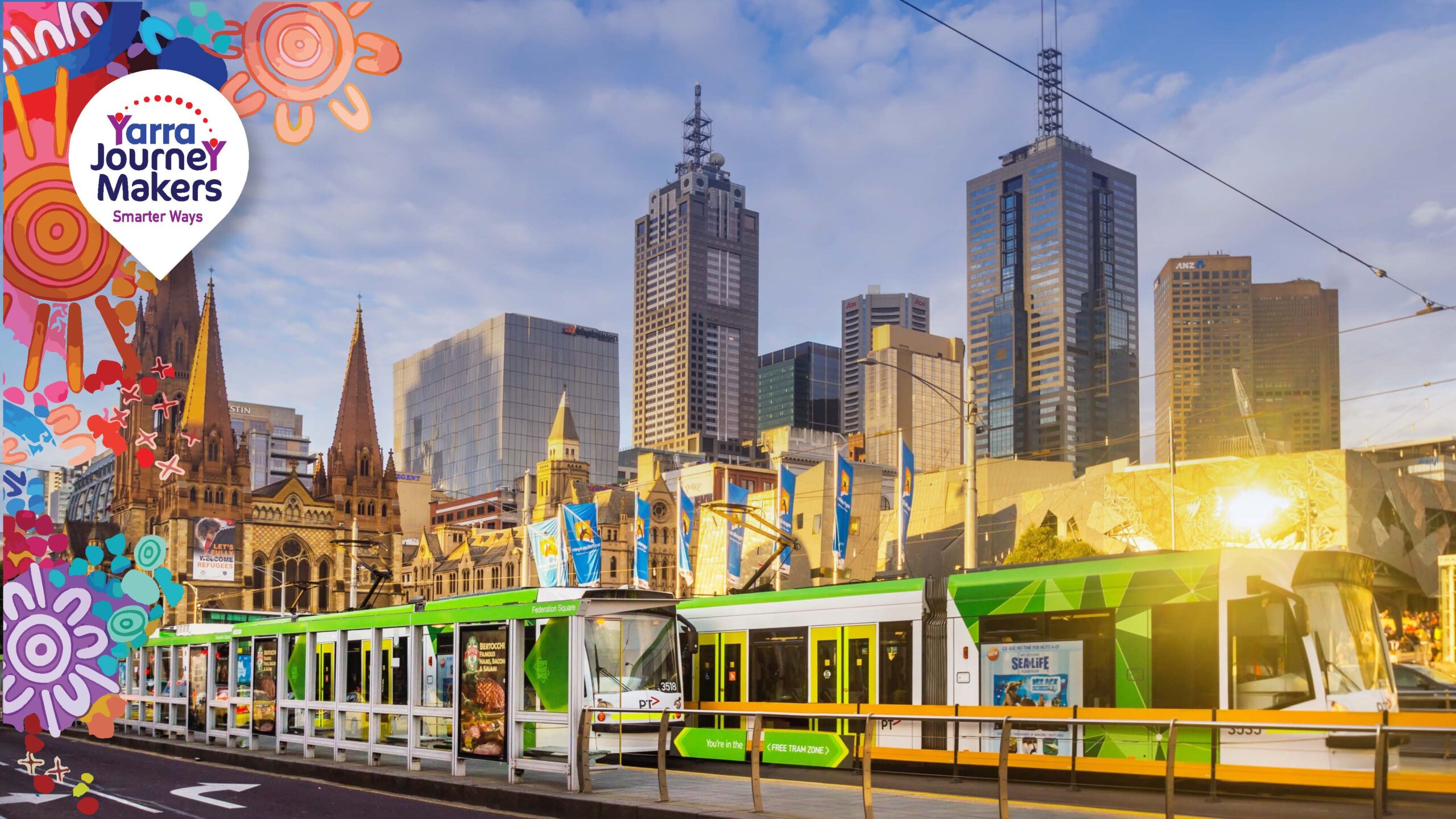
Description
Yarra Trams is responsible for the operation and maintenance of Melbourne’s tram network. Yarra Trams is proudly operated by Yarra Journey Makers, a joint venture between Transdev Australia and John Holland.
The Melbourne tram network includes 24 routes, 250km of double track, more than 500 trams, over 1,600 stops and nine depots, and currently delivers over 147 million passenger trips each year.
For more than 135 years, Melbourne’s tram network has developed and changed as the city has grown from the early days of a horse-drawn tram network to the modern network we have today.
Description
The project scope includes:
- Removing two level crossings at Glen Huntly Road and Neerim Road and adopting a rail under solution for the surrounding station and rail infrastructure.
- Building a new, modern Glen Huntly station.
- Removing one rail/tram square and integrating new tram infrastructure in its place
Acknowledgments:
People: Nathan Lord, Justin Lewis, Matthew Muru, Theo Mimoun
Suppliers: Hanson, Upparel, Ampol, ODM Electrical
Testimonial:
“The team is very proud to have achieved a leading rating for
Glen Huntly. This reflects the great Project outcomes, which
include a feature station, improved connections for the
community, and a reduced carbon build.” Hala Nader (Sustainability Advisor – Southern Program Alliance)
Rating Highlights
| Category |
Credits |
Achievements |
Risks |
| Energy |
Ene-1 |
Installation of a 60 kW solar panel array |
N/A |
| Water |
Wat-2 |
A 20 kL rainwater tank installed at the new station. |
N/A |
| Materials |
Mat-1 |
40% cement replacement mixes used for in-situ concrete across the project, including additional trials such as a 70% SCM mix used in the new pocket park by Neerim Road. |
N/A |
| Heritage |
Her-1 |
- Glen Huntly bell is a symbolic relic which was removed during the project and restored and has now been reinstalled close to its original location.
- 15 Canary Island Date Palms along Royal Avenue that are up to 100 years old were relocated during the works, and returned to site and replanted after the completion of works.
- Two artist designed neon sculptures honouring the local environment and surrounding architecture were installed within the new station forecourt.
|
N/A |
| Procurement |
Pro-4 |
Installation of green-powered EV charging station at the site compound and use of an electric vehicle. |
N/A |
Verified Innovations
| Name |
Verification Date |
Innovation Type |
Description |
| Enviro Pad |
13/12/24 |
Innovative Technology or Process
Victoria First |
The EnviroPad is a unique smart spill pad that captures and solidifies hydrocarbon spills including oils, fuels and hydraulic fluids. |
| Polybins |
13/12/24 |
Innovative Technology or Process
Victoria First |
Polyrok adopts the use of the recycling soft plastics and other plastic’s by placing ‘smart’ bins at sites offices and/or general areas. The waste collected in the bins is used in aggregate production. |
| 100% High vis
recycling |
13/12/24 |
Innovative Technology or Process
Australian First (awarded under 12 month ruling) |
SPA have partnered with Assembled Threads to test their 100% recycled Hi-vis vests. |
| ISupply |
13/12/24 |
Innovation Challenge (IC-8) |
Infrabuild reinforcing bar and mesh, Hanson concrete, Holcim ready-mix concrete. |
| Upparel |
13/12/24 |
Market Transformation |
SPA have partnered with UPPAREL to recycle staff PPE and workwear. |
| Foreign Object
Debris System
(FODS) |
13/12/24 |
Innovative Technology or Process
Australian First (awarded under 12 month ruling) |
A mat which picks up truck dirt before moving off site. |
Certification Date:
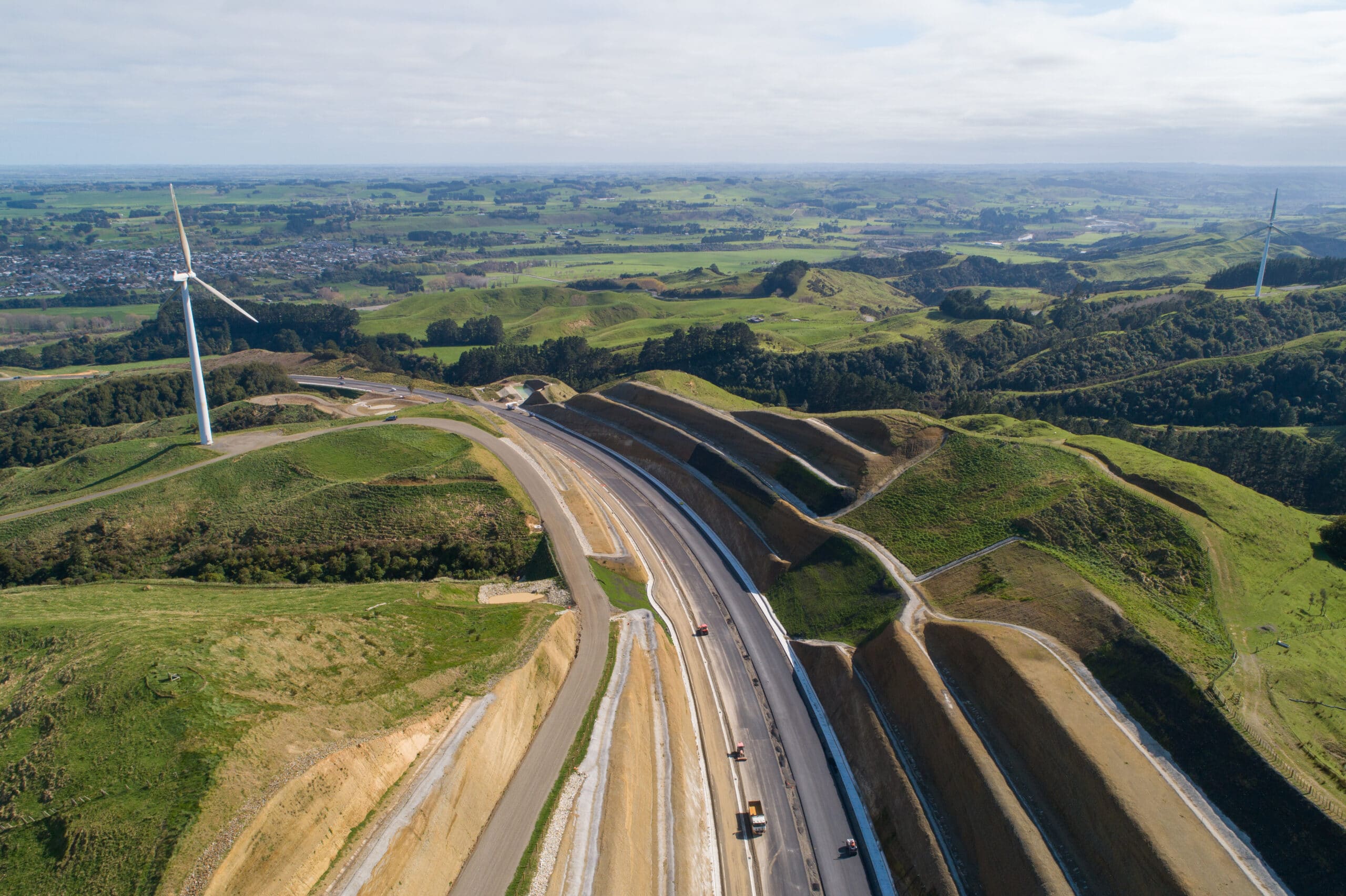
Description
Te Ahu a Turanga – Manawatū Gorge Highway is an 11.5km new highway between Woodville & Ashhurst, with two lanes each way.
A major slip in April 2017 left SH3 through the Manawatū Gorge impassable. This new road is being built over the Ruahine Range, to provide a safe, resilient, and efficient route.
The project scope is wider than infrastructure, with key result areas focused on broader outcomes such as creating local employment and upskilling communities.
It is being built by an Alliance of Waka Kotahi NZ Transport Agency, Fulton Hogan, HEB Construction, Aurecon, WSP, Rangitāne o Manawatū, Rangitāne o Tamaki nui-a-Rua, Ngāti Kahungunu ki Tāmaki nui-a-Rua, Te Runanga o Raukawa (Ngāti Raukawa ki te Tonga and Nga Kaitiaki ō Ngāti Kauwhata).
Rating Highlights
| Category |
Credits |
Achievements |
|
Eco-1 |
Ecological Outcomes
The Te Ahu a Turanga Alliance is committed to ‘treading lightly’. Wherever possible, we aim to leave the landscape in a better state than before we began. In the design period, careful and considerate design has reduced the potential impact on vegetation from 30ha to 11.8ha. The Project has committed to replacing the 11.8ha impacted with 45.6ha of new vegetation in some targeted locations, enhancing the existing flora population.
We were able to demonstrate this through the Biodiversity Offset Accounting Modelling and the Biodiversity Compensation Modelling for the Project, where the output values for terrestrial and wetland habitat types demonstrated a 113% gain in biodiversity scores is expected following revegetation at offset and compensation sites.
The Project achieved a verified level 3 and a score of 11.25 |
|
Mat-1 |
The Project achieved materials reduction of 8%, through initiative such as:
· Optimisation of pavement widths
· Replacing over 4km of reinforced concrete pipes with plastic uPVC pipes
· Reusal of site won materials rather than using imported fill
Using a Living Wall instead of steel reinforcing mesh
The project achieved a Verified level of 1.53 and a score of 3.44 through demonstrating a 8% reduction in Enviro points against their base case. |
|
Leg-1 |
The Project has committed to creating local employment and upskill the local workforce. The project is expected to employ over 2,000 people over its duration, with up to 350 people working on site at any one time which is a significant number of jobs for the Region and presents a significant legacy opportunity.
The Project partnered with the Universal College of Learning (UCOL) in 2020 to provide practical work experience to UCOL students. The UCOL programme was connected to Te Ahu a Turanga to promote awareness of opportunities and the nature of skills being sought. This has enabled people to gain greater skills through training opportunities such as internships, apprenticeships and work placements. So far at least 6 young people who attend UCOL have participated in an internship on the Project. The project has also provided work and training for four new university graduates.
The project achieved Level 3 and a score of 5 Points |
Acknowledgements
Iwi partners on the project from:
Rangitāne o Manawatū,
Rangitāne o Tamaki nui-a-Rua,
Ngāti Kahungunu ki Tāmaki nui-a-Rua,
Te Runanga o Raukawa (Ngāti Raukawa ki te Tonga and Nga Kaitiaki ō Ngāti Kauwhata).
Certification Date
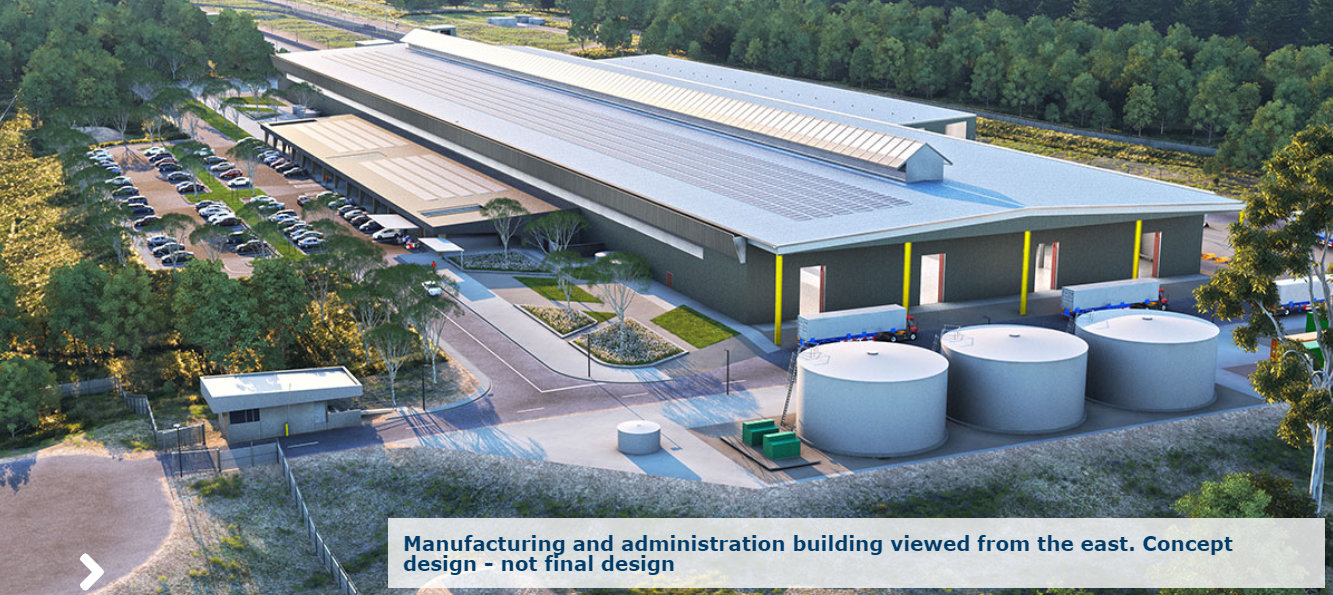
Description
The Project is a program of works that has been initiated by Queensland Department of Transport and Main Roads to modernise and allow the expansion of the South-East Queensland passenger train fleet to support the region’s population and economic growth, while reducing road congestion and associated emissions. Trains will be manufactured and maintained by Queenslanders to support jobs in Maryborough and other regional centres.
“At John Holland, the projects we deliver today shape the future for generations to come. With unwavering commitment, we strive to integrate environmental resilience, social progress, and economic health into every endeavour. Through the pursuit of an IS rating for the Queensland Train Manufacturing Program, we can effectively translate these commitments into actions, nurturing a sustainable future for all.”
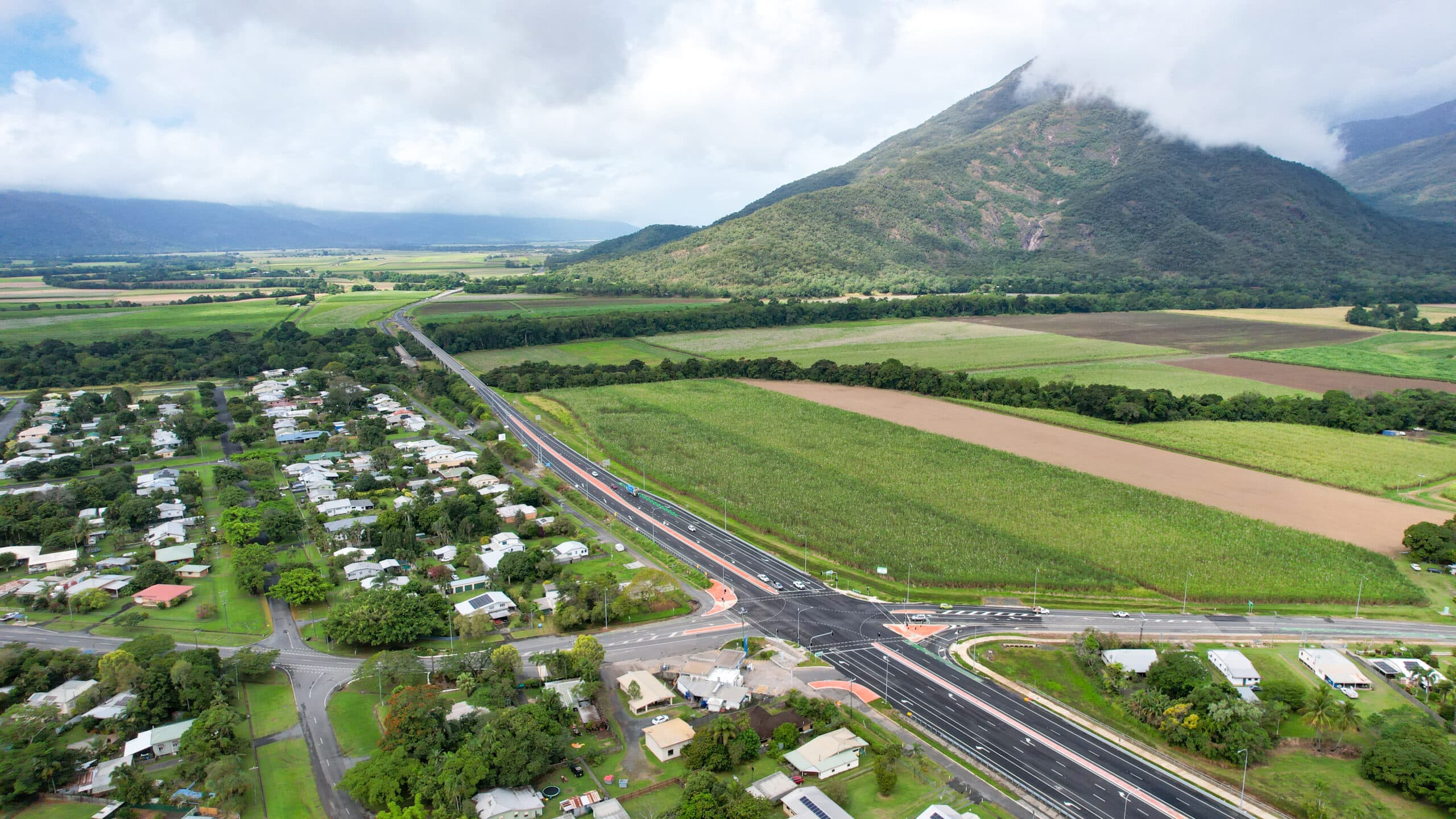
Description
Located just south of Cairns in Far-North Queensland, the Edmonton to Gordonvale, Bruce Highway, Cairns Southern Access Corridor (Stage 3) (E2G) project is the largest infrastructure project completed to date in the Far North Queensland Region. E2G was delivered by Joint Venture Partners, John Holland, Seymour Whyte Constructions, and AECOM (HSA Group), on behalf of the Queensland Department of Transport and Main Roads (TMR). All parties collaborated closely to achieve positive sustainability outcomes across the project.
The project included a 10.5km highway upgrade including duplication of all existing two-lane sections to four lanes, new service and local roads, the construction of 10kms of shared path cycleway and 11 new bridges. This also involved the relocation of all utilities including electric, sewer, water main and telecommunication, the relocation and construction of 4.4kms of Queensland Rail line, the construction of two new active level crossings and the relocation and construction of 8.8kms of cane rail and.
Rating Highlights
| Category |
Credit |
Achievements/ Description |
| MAN |
Man-6 |
Level 2 – Enhanced sustainability practices and knowledge among the JV Partners, TMR, and the broader industry by hosting knowledge-sharing events onsite in Cairns, conducting several webinars, and presenting case studies at industry conferences both in Australia and internationally |
| HEA |
HEA-1 |
Level 3 – Made a positive contribution to the local community that went beyond the project’s scope by supporting active transportation, implementing local skills development programs, and establishing Indigenous traineeships and employment opportunities. |
| HER |
HER-1 / HER-2 |
Level 3 / Level 3 – Successfully protected local cultural heritage features during construction and demonstrably enhanced local heritage values through collaboration with the Yindiji People |
| INN |
INN |
9.75 Pts – The development and implementation of multiple innovations including 2 Australian Firsts and 2 Queensland Firsts |
Verified Innovations
| Innovation Name |
Description |
| Emesh (Paving Process) |
The use of a slip form paver to construct concrete share path & cycleway with recycled plastic fibre reinforcement. Reduced Scope 1 carbon in footpath construction by 85% and tripled productivity with an overall cost reduction. |
| Emesh (Product) |
The use of recycled plastic macro reinforcement in the shared path & cycleway replaced 115T of steel with 25T of recycled plastic fibres, reducing embodied carbon in the reinforcement by 73% while also supporting an NDIS initiative. |
| Off-Grid Solar Hybrid Power |
The widespread use of solar-hybrid generator systems to provide reliable off-grid power to the project compounds and temporary utilities. Reduced diesel and emissions from generator use by 70% and supported a Cairns local business to diversify further into sustainability. |
| Drones Light Pollution Inspections |
The use of Drones to conduct aerial inspections of light pollution was developed as a more efficient, more effective and safer way to review potential light escape impacts on sensitive receivers during nightworks such ass the local community and protected flying fox roosts. |
Acknowledgements – People
– HSA Joint Venture Project Team
– TMR Project Team including the construction verifiers APP Group
– INTI APAC Sustainability Consultants
– Biosphere Ecological Consultants (Cairns)
Acknowledgements – Suppliers
– Vital Chemicals
– Holcim Concrete
– NQ Solar (Cairns)
– Site Hive
Testimonial
The IS Rating tool was an effective way for the project team to understand how each discipline and scope of work could contribute to sustainability outcomes across the pillars of sustainability. The tool allowed the team to holistically assess sustainability performance and ensure that the E2G project would positively contribute to infrastructure sustainability. Andrew Kindness, Sustainability and Environmental Advisor – John Holland
Description
The Barwon Heads Road WP1 upgrade project involved the duplication of the road between Settlement Road, Belmont, and Barwarre Road, Marshall. The project has improved traffic flow, access to active and public transport, and enhanced road user safety.
Key features of Work Pack 1 included:
- The construction of a new 2-lane carriageway alongside the reconstruction, realignment, rehabilitation, and upgrade of the existing carriageway to create a 4-lane, 2-way divided road with bike lanes, kerbs and channels, medians, access and maintenance tracks, and parking.
- A cantilever structure to provide a shared-use path adjacent to sensitive wetlands
- Two upgraded and two new signalised intersections with Closed Circuit Television (CCTV)
- Demolition and replacement of the existing bridge with a new, wider bridge over Waurn Ponds Creek
- 3.0 m wide shared-user path to connect a path along the entire project length from Settlement Road to Barwaree Road.
- Construction of other related assets and structures such as retaining walls, major culverts, lights and signage.
Rating Highlights
| Category |
Credits |
Achievements/Risks |
| Climate Change Adaptation |
Cli-2 |
The Project achieved a verified level of 3 with a score of 3.52.
The Project demonstrated a proactive approach to managing climate risks, ensuring long-term resilience and safety by having operational and maintenance plans in place.
The project addressed six medium climate change risks, implementing adaptation measures for all. Key initiatives included:
- Upgrading drainage infrastructure to handle increased rainfall
- Improved road geometry to shorten flow paths and prevent inundation
- Incorporating drought-tolerant native plants to combat reduced soil moisture
- Regular maintenance practices, such a trimming and weed removal ensured long-term landscape health
- Using shading and heat-resistant materials for user paths to mitigate extreme heat effects.
|
| Water |
Wat-1 |
The Project achieved a verified level of 3 with a score of 4.76.
The project effectively managed and monitored water usage throughout construction, incorporating both potable and non-potable sources to minimize environmental impact.
For Construction activities – non-potable water from onsite sediment basin for dust suppression and general construction. Daily water cart refills were logged and tracked. Used hydrant water in the absence of non-potable water.
Office Amenities – Rainwater was collected and used for toilet flushing, with automatic switch to mains when empty while the meter readings tracked usage.
A Water Monitoring Register was maintained with water usage sources and volumes. |
| Ecology |
Eco-1 |
The Project achieved a verified level of 3 with a score of 5.28.
The project achieved a 6% enhancement in ecological value, demonstrating a comprehensive approach to environmental management and sustainability.
Noteworthy Initiatives are as follows:
- Achieved a 6% ecological value enhancement using the Green Star EV Calculator
- Established no-go zones and supervised tree-clearing works
- Included native landscaping, water-sensitive urban design, and waterway restoration
- Purchased off-site offsets for impacted native vegetation and achieved a net gain of 0.604 HHa
- Ensured perpetual protection and regular compliance monitoring
- Ensured ongoing ecological value maintenance over 30 years.
|
Certified Date

Description
The Stanmore and Denistone Upgrade is part of the third tranche of Transport for NSW’s Transport Access Program, known as TAP 3 and seeks to improve access to public transport for those with disability, those with limited mobility or parents with prams and customers with luggage (TAP 3 | Transport for NSW). Providing accessible transport services for everyone in the community, is one of the six priorities for Transport for NSW’s Future Transport Strategy.
Rating Highlights
| Category |
Credits |
Achievements/Risks |
| Energy and Carbon |
Ene-1 |
The Project achieved a verified level of 3 with a score of 13.5.
Through energy-efficient design, renewable energy integration, and GHG emissions offsetting, the project significantly reduced energy use and GHG emissions achieving 32% reduction in Total Lifecycle Energy use and a 58% reduction in Total Lifecycle GHG emissions.
|
| Water |
Wat-1 |
The Project achieved a verified level of 3 with a score of 6.75.
The project incorporated efficient water fittings for Sydney Trains assets, including low-water Caroma dual flush toilets (12% annual water reduction), 6-star WELS taps (40% reduction), and 5-star urinals at Stanmore Station (50% reduction). These measures significantly reduced water usage, demonstrating a strong commitment to sustainability. |
| Urban Landscape and Design |
Urb-1 |
The Project achieved a verified level of 3 with a score of 6.
The project achieved urban landscape credit by involving qualified professionals with over 5 years from DesignInc, who prepared, reviewed, and monitored the design plans. They ensured compliance and implementation through active participation in design meetings and construction monitoring. Evidence of implementation was documented with As Built drawings and photo logs for Denistone and Stanmore stations. |
Verified Innovations
| Name |
Verification Date |
Innovation Type |
Description & Sustainability Benefits |
| IC-8 Supply |
06/10/23 |
Innovative Technology or Process |
The Project received 0.75 points.
Made use of the iSupply directory that has connected sustainable supplier to the construction company. |
| Urb-1 |
24/06/24 |
Exceeding Credit Benchmark |
The Project received 1 point.
The Project exceeded credit benchmark by utilizing Suitably Qualified Professionally with over 5 years’ experience to monitor Urban Design through construction, assessment of compliance and implementation of Urban Public Domain and Landscape Design Plan.
|
| Wat-1 |
24/06/24 |
Exceeding Credit Benchmark |
The Project received 1 point.
The project has met the ‘improving on credit benchmark’ criteria for the Wat-1 Water use reduction by exceeding the 20% reduction requirement achieving 25% reduction in operation through the initiatives described in Wat-1, including:
- WELS toilets (4 star)
- High efficiency taps (6 star) and
- Urinals (5 star)
|
Certification Date
Description
Sydney Metro is Australia’s largest public transport project, transforming Sydney with more trains and faster services. At Central Station, construction includes:
- Two new underground concourses
- North-South Concourse above the new Metro station
- Central Walk for better connectivity to trains, light rail, and new Metro platforms
- Demolition and reconstruction of suburban rail platforms 12, 13, and 14, shifted 2.5m for the new Northern Concourse
- Refurbishment of Northern and Grand Concourse with a new vaulted roof and large void revealing heritage buildings
- A new Eastern Entrance for access from Chalmers Street’s light rail stop, through demolition and excavation below an existing building.
Rating Highlights
| Category |
Credits |
Achievements/Risks |
| Energy and Crabon |
Ene-1 |
The Project achieved a verified level of 3 with a score of 12.11.
The Project collectively supported the project’s energy sustainability criteria, emphasizing longevity, efficiency, and reduced environmental impact across its lifecycle. The Project focused on key aspects:
- Solar PV System: Upgraded to a 25-year design life with high efficiency panels, ensuring long-term energy generation.
- Integrated Grid decarbonisation into both base case and actual operations models, ensuring consistency in emissions factors and contributing to overall reductions in carbon footprint.
- Streamlined construction duration to 58 months to ensure operational efficiency.
- Transitioned to permanent renewable electricity sources by April 2023, minimizing fossil fuel consumption and enhancing site sustainability.
- As a result, the project achieved a reduction of 31.9%.
|
| Water |
Wat-1 |
The Project achieved a verified level of 3 with a score of 6.06.
The Project implemented efficient water management practices and optimized water usage across different phases. Some of the key initiatives are:
– Non-potable water sources were effectively utilized, reducing reliance on potable water and minimizing environmental impact.
– Robust methodologies were employed to calculate water usage accurately, even in cases where meter readings were unavailable, ensuring transparency in reporting.
– Continuous improvement efforts included reviewing and updating formulas and calculations in the water balance model to maintain consistency and align with sustainability goals.
As a result, the Project achieved a significant 24.6% reduction in water consumption compared to the base case, demonstrating a strong commitment to sustainable water management and environmental stewardship.
|
| Heritage |
Her-1 |
The Project achieved a verified level of 3 with a score of 4.49.
The project successfully integrated community heritage values through the following initiatives:
– Consultation and Engagement: Engaged with Aboriginal stakeholders through formal consultation processes led by Dr. Sandra Wallace, gathering cultural knowledge and feedback on heritage impacts.
– Managed an 18-month excavation at the former Devonshire Street Cemetery, preserving Aboriginal and European artefacts and human remains with care.
– Interpretation and Recognition: Integrated identified heritage values into the project’s interpretation plan, acknowledging the area’s historical significance as a cultural corridor and gathering place for Aboriginal communities.
These initiatives underscore the project’s commitment to respecting and incorporating community heritage values, ensuring their preservation and meaningful inclusion in project planning and execution. |
Verified Innovations
| Name |
Verification Date |
Innovation Type |
Description & Sustainability Benefits |
| Inn-1 Return and Donate |
6/5/2024 |
Market Transformation |
The Project received 1 point.
The ‘Return and Donate’ initiative implemented on site by the project with the help of Citizen Blue is transforming the waste market in NSW by promoting personal recycling practices, reducing waste, and simultaneously supporting local charities. |
| Inn -2 GECA Waste Services |
20/12/2023
|
Innovative Technology or Process
Australian First |
The Project received 3 points.
GECA for Waste Collection Service standard is a process, that results in a new approach in improving supply chains. Overall, the certification helped create change in the broader construction marketplace by presenting the benefits in improving the sustainability credentials of waste collection services which can also be applied to other industries. |
Certification Date
Description
The Warringah Freeway Upgrade (WFU) is a major NSW Government infrastructure project to support Sydney’s growth.
- It will connect the new Western Harbour Tunnel and Beaches Link (WHTBL) motorways to the existing network, enhancing connectivity and safety for public transport, freight, and private vehicles.
- The project will improve the journey experience for current Warringah Freeway users.
- It will boost transport capacity around the Harbor CBD and improve connectivity to and from the Northern Beaches.
- The upgrade is being delivered by a joint venture of CPB Contractors and DT Infrastructure.
- It includes surface road upgrades, structural works, and ancillary works over an approximately four-kilometer section of the freeway.
- The focus is on simplifying traffic flows, enhancing wayfinding, and enabling works for the new WHTBL and Northern Beaches Link.
Rating Highlights
| Category |
Credits |
Achievements/Risks |
| Energy and Carbon |
Ene- 1 |
The Project achieved a verified level of 3 with a score of 11.75.
The project prioritized sustainability through innovative solutions like SamiFrid pavement reinforcement and strategic lighting optimizations demonstrating the commitment to environmental stewardship.
- SamiGrid Application: SamiGrid reinforced pavements reduce asphalt thickness, enhance durability, and cut maintenance emissions by 54%.
- Lighting Optimization: Pedestrian lighting removal and design adjustments aligned Base Case emissions with the Design Case, yielding marginal energy savings.
- Operational Fuel Efficiency: Quantified fuel savings from reduced asphalt maintenance activities using specific asphalt paver and roller rates ensured comprehensive operational greenhouse gas emissions reductions.
These initiatives collectively contributed to achieving an 84.62% reduction in GHG emissions and a 0.3% reduction in energy consumption excluding offsets and purchased GreenPower compared to the Base Case. |
| Materials |
Mat-1 |
The Project achieved a verified level of 2.7 with a score of 9.26.
Here are the noteworthy sustainability achievements advocating commitment to responsibly managing resources and environmental impacts by monitoring and modelling:
– Implemented SamiGrid for pavement reinforcement, reducing asphalt thickness and maintenance emissions by 54%.
– Retained existing road furniture and noise walls after detailed design assessment, avoiding decommissioning and replacement, contrary to BAU practices.
– Implemented design optimizations post-Concept Design, such as reducing drainage line lengths and spacing between PSC planks, contributing to a 1.3% reduction in IS EnviroPoints. |
| Urban and Landscape Design |
Urb-1 |
The Project achieved a verified level of 3 with a score of 5.22.
The project embodied a holistic approach to urban development, integrating climate resilience, and community connectivity. Through meticulous planning and strategic initiatives, it aims to enhance sustainability while preserving heritage and improving urban liveability.
- Incorporated site-specific context and climate resilience
- Enhanced accessibility and pedestrian infrastructure
- Retaining and integrating historic elements
- Promoted public transport and cycling infrastructure
- Utilized eco-friendly and durable construction materials
- Increasing and preserving open spaces
- Ensured adherence to sustainability standards throughout implementation.
|
Certification Date
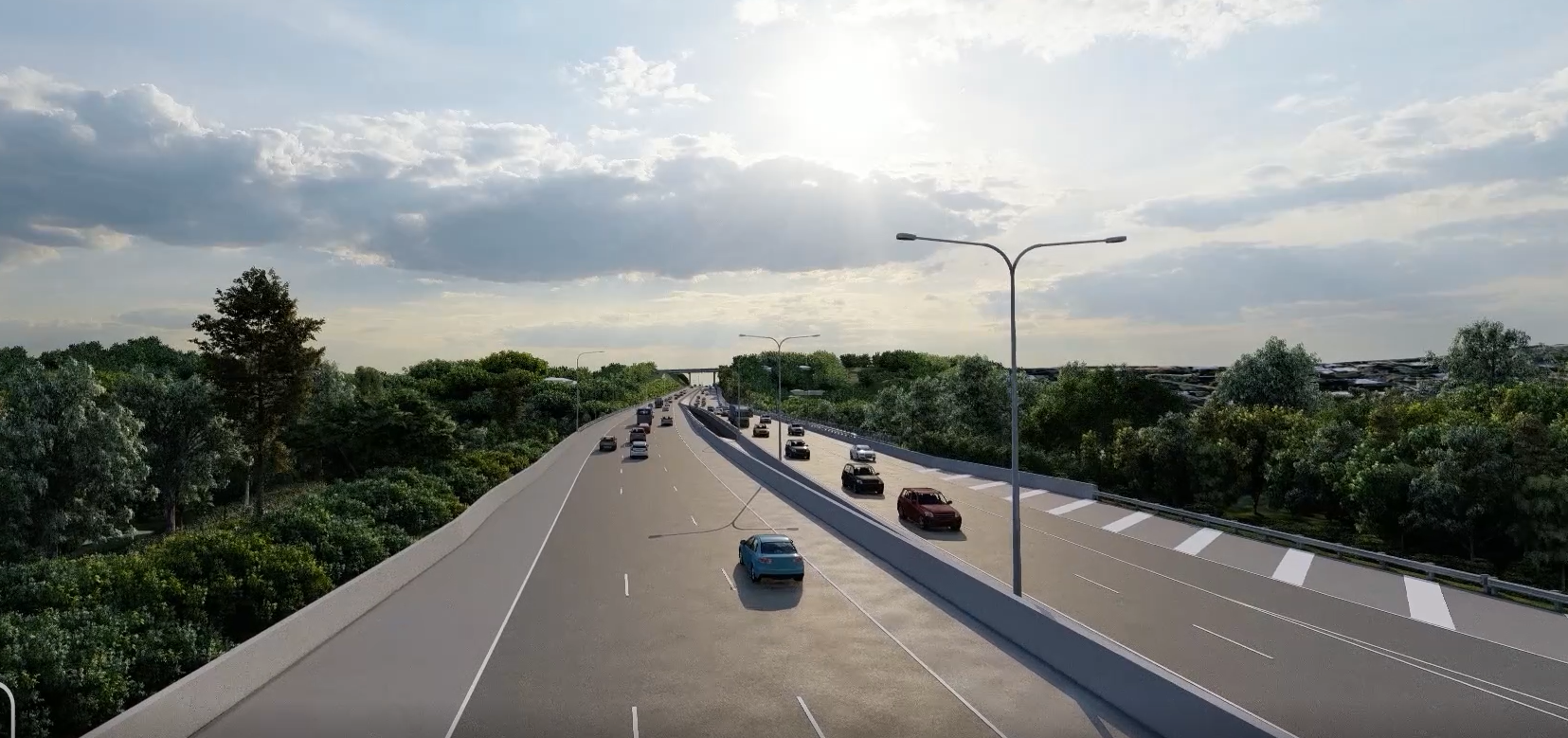
Description
The Centenary Bridge Upgrade in Jindalee proposes a new 3-lane northbound bridge, rehabilitation of the existing bridges to 3 lanes southbound, plus opportunities for improved active transport.
This extra capacity would provide greater efficiency and travel-time reliability between Brisbane’s CBD and the western suburbs, between local destinations, and along the entire Centenary Motorway.
The planning study for the Centenary Motorway Upgrade identified possible staged upgrades along the Centenary Motorway from Sumners Road, Darra, to Frederick Street, Toowong. These staged upgrades are aimed at meeting the region’s future transport needs and include options focused on safety, improving travel-time reliability, and new active transport opportunities for pedestrians and people who ride bikes.
The Centenary Bridge carries more than 85,000 vehicles a day and current traffic modelling shows that by 2036, around 152,000 vehicles per day will want to cross the bridge.
Key features
- A new 3-lane northbound bridge.
- Remediation of the existing bridges to create 3 southbound lanes.
- Upgraded active transport facilities for pedestrians and people who ride bikes, with improved connections to the Western Freeway Bikeway and local destinations, including retention of the Jindalee Skate Park.
- Greater efficiency and travel-time reliability.
Highlights
- The project demonstrated a net improvement to operational water quality from stormwater runoff that flows into the Brisbane River, which flows into the Brisbane River and Jindalee Creek. This was enabled by retrofitting stormwater treatment for existing pavements and the inclusion of a permanent water quality treatment train comprising of swales, vegetated buffer strips, bioretention basins, and gross pollutant traps for litter and sediment removal.
- A 15 percent reduction in material lifecycle impacts was achieved. Initiatives included retention of the existing bridge substructure and foundations while modifying the deck beams and slab, galvanising large beam sections to reduce re-applications of paint coatings over the operational phase, reductions in pile and column volumes due to design reconfigurations, and resurfacing of existing pavements.
Rating Highlights
Rating highlights included net improvements to operational water quality, a 15% reduction in material lifecycle impacts.
Acknowledgments
Asset owner: QLD Department of Transport and Main Roads
Design consultant: AECOM
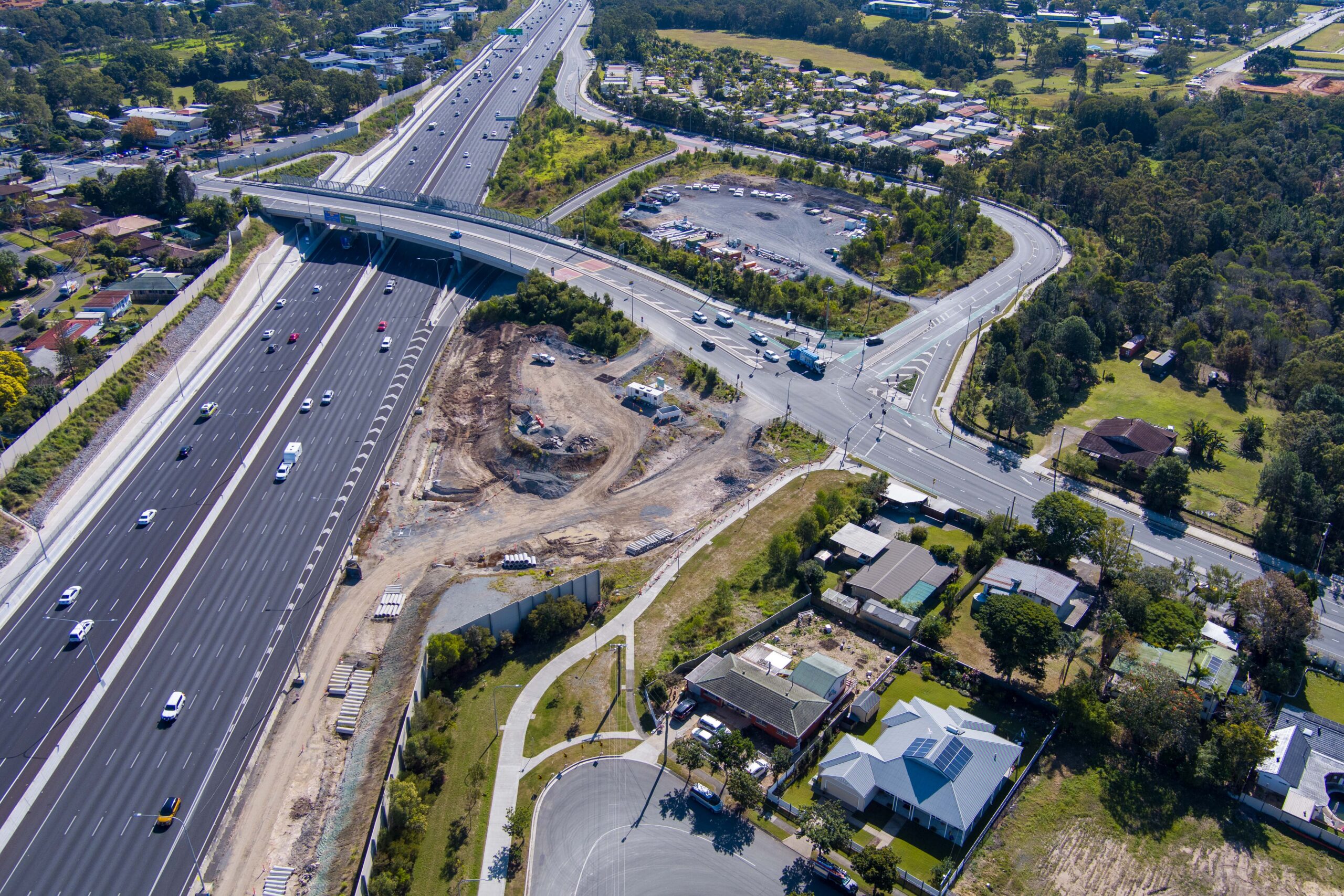
Description
A new bus station and park ‘n’ ride facility with capacity for approximately 485 vehicles will be constructed at the corner of School and Underwood Roads in Rochedale. The new bus station and park ‘n’ ride will connect with the South East Busway extension to provide local residents with greater access to public transport and improve travel time reliability. This project is being delivered as part of the Pacific Motorway, Eight Mile Plains to Daisy Hill Upgrade (Stage 2).
Key Achievement
Delivered several environmental and community benefits such as a significant enhancement in local ecological value compared to existing conditions.
Highlights
- Achieved approximately a 12% reduction in GHG emissions associated with energy use during construction and operation compared to the Base Case.
- Achieved approximately an 8% reduction in embodied emissions associated with construction materials compared to the Base Case.
- Delivered several environmental and community benefits such as a significant enhancement in local ecological value, improved active transport through the dedicated cycle way facilities, local economic benefits such as prioritising local employment and skill development, and prioritising local suppliers in the procurement of goods and services.
Rating Highlights
Significant enhancements to ecological value compared to existing conditions, estimated 12% reduction in GHG emissions associated with construction and operational energy use, and 8% reduction in embodied emissions associated with materials.
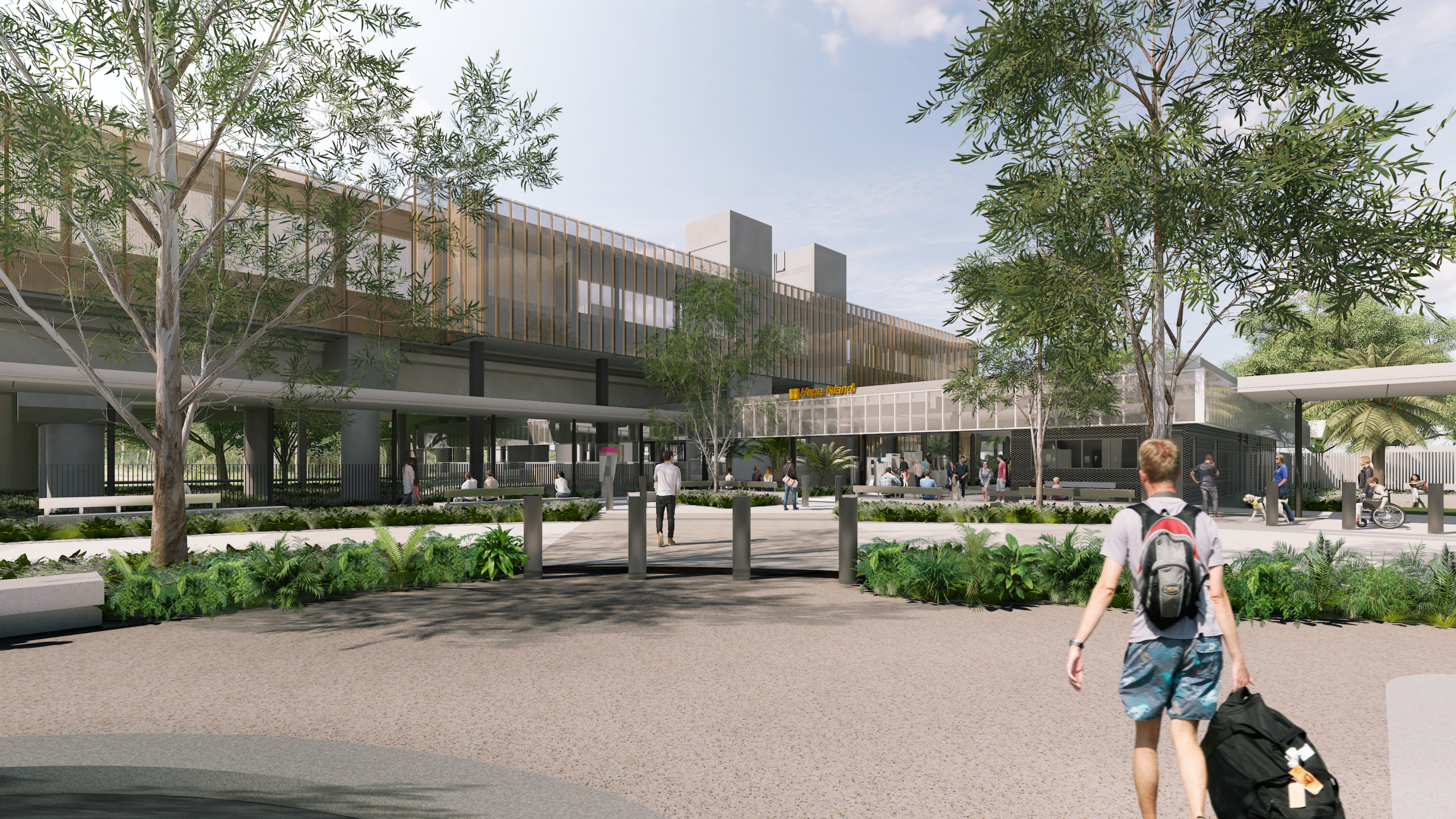
The Cross River Rail Delivery Authority is delivering three new rail stations on the Gold Coast line at Pimpama, Hope Island and Merrimac as part of the Cross River Rail New Gold Coast Stations program.
The Hope Island Station is located between the existing Coomera Station to the North and Helensvale Station to the South. Vehicle access will be via a new signalised intersection on Hope Island Road at the western end of the precinct, whilst active transport access will be close to the station entry directly from Hope Island Road.
The Hope Island Station Project includes:
- Two new 175 m long platforms
- Station building located under the existing railway viaduct
- High-capacity lifts and switchback stairs for plaza and platform access
- Installation of car parking facilities with approximately 179 car spaces
- New signalised intersection on Hope Island Road
- Park ‘n’ ride facility located west of the existing rail corridor
- Kiss ‘n’ ride facility located west of the existing rail corridor
- Pedestrian and cycle path connections
- Accessible features including wayfinding signage and assistance animal relief area
- Lighting and CCTV throughout the carpark and station.








